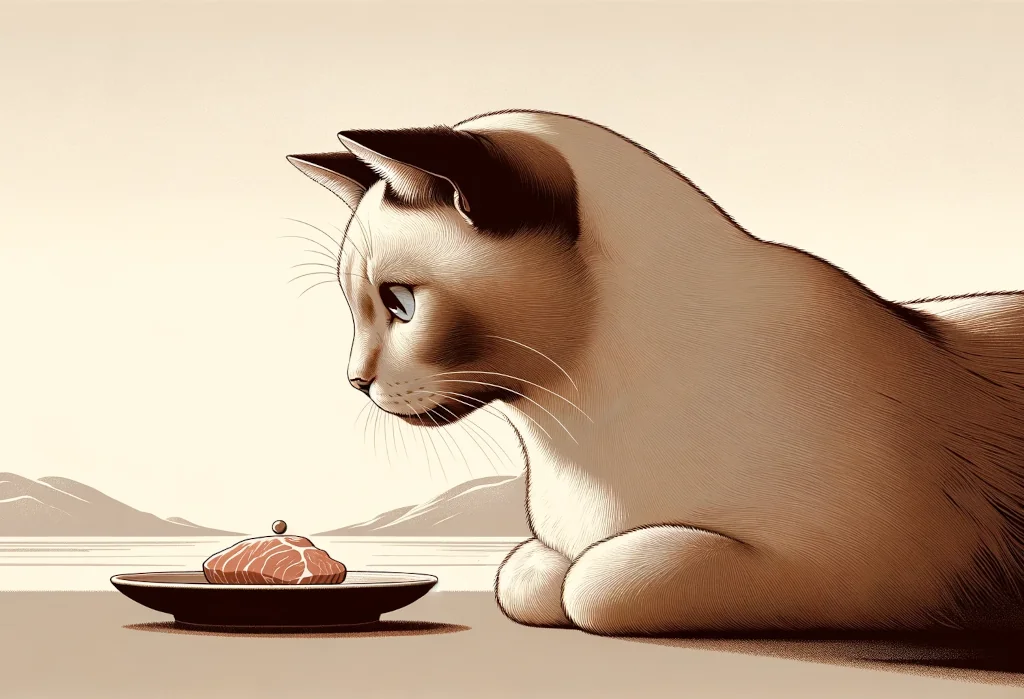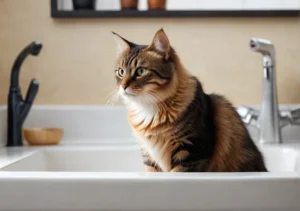Watching your feline friend turn into a purring vacuum cleaner every time you dish out meat can make you wonder if they’re just being greedy or there’s something more. Ah, the mysterious ways of our whiskered companions! In this post, we’ll sink our claws into the meaty reasons behind this carnivorous craze.
By the end of this read, you’ll not just understand why your kitty craves meat but also how you can harness this knowledge to keep them healthy and happy.
Quick Takeaways:
- Cats are obligate carnivores, requiring high-protein meat to fulfill essential nutritional needs like taurine and vitamins.
- Balance and variety in a cat’s meat intake prevent nutrient deficiencies and health issues.
- Consult a vet for tailored dietary advice, especially when considering a vegetarian diet or managing a cat’s health conditions.
Is Meat Really That Important to Cats?
You’ve probably noticed how your feline friend perks up at the sight or smell of meat. There’s a good reason for this: cats are obligate carnivores. In plain speak, this means their bodies are hard-wired to extract nutrition primarily from animal products. Unlike us or even dogs who can get by on a more varied diet, cats have specific nutritional needs that only meat can satisfy adequately.
Obligate carnivores have a unique biological setup. Their digestive systems are specially designed to break down and absorb nutrients from animal tissue. Plus, their metabolism has adapted to thrive on a high-protein, low-carbohydrate diet that is best supplied by meat. This is not a lifestyle choice but a survival strategy etched into their DNA.
What Nutrients Do Cats Get From Meat?
Meat isn’t just a tasty treat for cats; it’s a powerhouse of essential nutrients that are crucial for their health and well-being. Here’s a breakdown of what they get:
- Taurine: This is a big one. Taurine is an amino acid found abundantly in muscle meat. Cats cannot synthesize enough of it on their own, and a deficiency can lead to serious health issues like blindness and heart problems.
- Protein: High-quality animal protein provides the building blocks for muscle maintenance and repair. It’s also vital for a healthy immune system.
- Vitamins: Meat is a source of many B vitamins necessary for energy production and nutrient metabolism. Vitamin A, which is crucial for vision and immune function, is found in organ meats. Cats cannot convert beta-carotene from plants into vitamin A, so they need a direct animal source.
- Fatty acids: Essential fatty acids in meat help keep a cat’s skin and coat healthy.
Here’s a unique tip most don’t consider: While liver is an excellent source of nutrients, feeding too much can lead to vitamin A toxicity. The key is balance and variety within their meat intake.
Can Cats Survive on a Vegetarian Diet?
So, the million-dollar question: Can cats be vegetarians? In short, it’s risky business. While there are commercial vegetarian cat foods claiming to meet all of a cat’s nutritional needs, including synthetically added taurine, the debate is hot on whether this can truly substitute the real deal.
Cats on a vegetarian or vegan diet are at a higher risk of nutrient deficiencies, no matter how well-intentioned their owners are. Taurine, for instance, is less bioavailable in synthetic forms. Plus, the lack of animal protein can lead to muscle wasting and other serious health issues.
If you’re contemplating a vegetarian diet for your cat due to ethical reasons, it’s vital to consult with a veterinarian who’s knowledgeable about feline nutrition. They can help devise a feeding plan that, while not ideal, minimizes health risks as much as possible.
Remember, the health and well-being of your furry companion should always come first. Meat satisfies their dietary needs in a way that currently, no plant-based diet can fully replicate. As their guardian, it’s up to us to ensure they’re getting the nutrition they need in a form they’re designed to digest.
How Much Meat Should Cats Eat Daily?
Finding the right balance of meat in your feline friend’s diet is crucial for their health and wellbeing. Let’s dive into how to ensure their meals are purr-fectly portioned. Remember, your cat’s dietary needs vary with age, health condition, and lifestyle.
Kittens
Kittens are like little energy bundles, and they need ample protein to support their growth. A general rule of thumb is to offer them meat-based foods that account for about 30% of their diet. The rest should be a balanced mix of vitamins, minerals, and water to support healthy development.
Adult Cats
As cats reach adulthood, the focus shifts to maintaining health and preventing obesity. For the average adult cat, meat should make up about 20-30% of their daily intake, adjusted for activity level and health concerns. Indoor cats might lean towards the lower end, while outdoor adventurers may need more fuel for their escapades.
Senior Cats
Senior cats might not be as active, but their need for high-quality protein remains. Adjustments should be made for any health issues, such as kidney problems, where protein intake might need to be carefully managed. Discuss with your vet the best approach for your senior kitty.
Underfeeding vs. Overfeeding
Both extremes can lead to health issues. Underfeeding meat can lead to nutrient deficiencies, while overfeeding, especially fatty meats, can contribute to obesity and related health problems like diabetes. Watch your cat’s weight and adjust their diet accordingly.
How to Choose the Right Meat for Your Cat
Selecting the right kind of meat for your cat goes beyond grabbing the nearest chicken breast from the fridge. Here’s how to ensure your choice is safe, nutritious, and appealing to your feline friend.
Quality and Safety : Always opt for fresh, high-quality meat. Avoid anything processed or with added salts and spices. Remember, what’s good for humans isn’t always good for cats.
Raw vs. Cooked : This is a hot topic. While raw diets can mimic what cats eat in the wild, they also pose risks of bacterial contamination. If you choose raw, meticulous handling and storage are non-negotiable. Cooked meat is safer but should be done without oils or seasonings.
Safest Meats : Poultry (chicken and turkey) and fish are generally safe bets when cooked properly. Lean cuts of beef can also be good in moderation. However, ensure fish is not a daily treat due to the risk of mercury exposure.
What to Avoid : Steer clear of pork due to risks of pathogens, and say a big no to onions, garlic, and chive, which can be toxic to cats. Also, avoid feeding your cat a diet heavy in liver or other organ meats alone, as it can lead to vitamin A toxicity over time.
A Unique Tip
One insight often overlooked is the benefit of rotating the types of meat you feed your cat. This variety can not only keep your cat interested in their meals but can also provide a broader spectrum of nutrients, reducing the risk of specific nutrient deficiencies. Plus, it’s a great way to find out which meats your cat prefers, making mealtime a joy for them.
Remember, every cat is unique, and what works for one may not suit another. Always keep an eye on how your cat reacts to their diet and adjust accordingly. And when in doubt, consult with a vet to tailor a diet that keeps your furball healthy, happy, and ready for their next adventure (or nap).
Combining these tips with a sprinkle of love and a dash of attention to detail will ensure your cat’s diet supports a long, contented life. After all, a well-fed cat is a happy cat, and happy cats make for happy homes.
Alex, a passionate animal lover, has experience in training and understanding animal behavior. As a proud pet parent to two dogs and three cats, he founded AnimalReport.net to share insights from animal experts and expand his knowledge of the animal kingdom.





